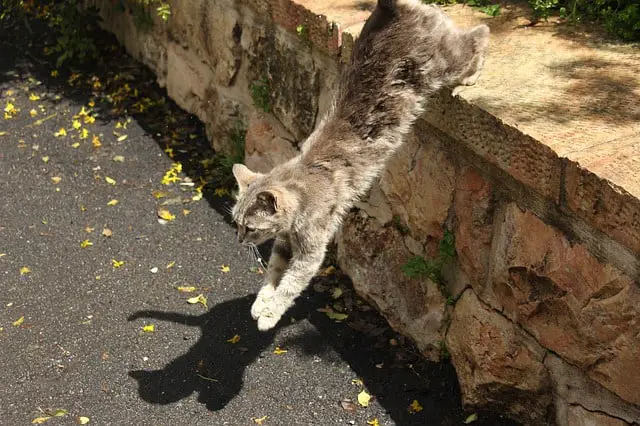Cats don’t have seven lives, but their fascinating secret to always landing on all fours explains that their lives are sometimes longer

Cats do not have seven lives as the saying goes, but a great mechanism in their body does help them extend their lives in the event of an accident: they always land on their four legs. This article describes this fascinating secret of cats, and explains why this mechanism is known as a parachute cat and the reason that makes it more dangerous for the feline to fall from a sixth floor than to do it from a skyscraper .
Why do cats always fall on their four legs?
90% of cats that fall from a height of between 2 and 32 plants survive, thanks to the fact that they have learned to fall on their feet
The cats have nine lives as ensures that (nine in the Anglo – Saxon culture), but a great mechanism your body if it helps them live longer in case of accident. The sense of balance in cats is so exceptional that it protects them during accidental falls, so that, whatever their initial posture, it makes it easier for them to turn around to land with all four legs resting on the ground.
But, what is the secret of the felines to achieve this feat? A perfected system of five tubes, filled with liquid and housed inside the cat’s ears, is responsible for this feat. The ducts are covered with fine hairs inside, and these hairs stuck in the liquid detect any twists or strange movements in the cat. The arrangement of this hairy layer inside the ears offers valuable information to the rest of the animal’s body in the event of a free fall. And in a matter of tenths of seconds, it transfers to the head, trunk and legs what is the correct position to cushion the blow in the best possible way, that is, with a landing on all four legs.
This information explains the extraordinary sense of balance in cats, who are able to regain their normal position with their feet down during falls in just a few seconds.
How do cats always fall on their four legs?
How do they do that? In the event of a fall, the time it takes for the cat’s body to detect that there is a problem is minimal. Less than a tenth of a second after the legs lose contact with firm ground, the organs responsible for balance go to work.
The cat’s ears send information to the rest of the body during free fall, to reposition itself and land on its paws
The first information that the body of the feline that falls in free fall from the tubular system housed in its ears receives is what the normal position of the head should be. This reflex causes the animal’s neck to turn immediately, in such a way that it allows the head to return to its normal height.
After putting its head in the normal position during the fall, the cat causes an internal movement that causes the rest of its muscles to twist.
After the head, turn the spine of the feline and, with it, first the front legs and, lastly, the hind legs. Once in this position, it is easier for the animal to fall to the ground without doing so much damage.
Parachute cats: more danger in small falls
The cat’s sophisticated balancing system still has a few more surprises in store. During their initially more complicated falls, due to their greater height, felines are able to form a parachute with their body, since they stretch their four legs and round their back sharply. Thus, the jack increases the friction surface of its body with the air, increases the friction and, consequently, reduces the speed of its fall. The peculiar figure it adopts explains why the posture is nicknamed the paratrooper cat.
In this way, felines reduce the speed of their free fall to a maximum of 85 kilometers per hour, half what a person would reach under the same circumstances; although it is still a great speed, this mechanism allows many cats to survive during the most dangerous falls.
Does a cat have seven lives? But without dangers

The cat’s spectacular balance, along with its sophisticated mechanism for landing on its legs during free descent, explains why many cats save their lives when they fall from windows, high trees or other heights.
However, it must be remembered that these falls also pose a great danger to them, with a significant risk of suffering serious injuries.
Also, the parachute jack mechanism is not always fool proof . During the shorter falls, the animal does not have time to react and to activate its protection. For this reason, the danger of suffering severe bruises and fractures increases when the height of the fall of the feline is lower. Consequently, it is safer for a feline to fall from a skyscraper than to fall from a sixth or eighth floor.
In any case, the advice is clear: avoid cat falls. The mode? Protect windows and balconies well: any moving object is capable of capturing the attention of curious kittens and causing an accident with sad consequences.






